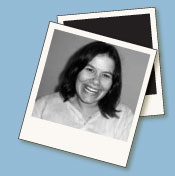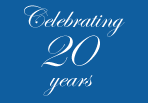

Krystine Donato
Biography
Krystine graduated from the honours program of Child and Youth Studies at Brock University in 2002. Currently, she is in the Masters of Child and Youth studies, also through Brock University. Krystine’s areas of focus include: students with disabilities in post-secondary institutions, training for faculty members on issues surrounding teaching students with disabilities and human rights training for individuals with disabilities. Krystine is also a member of the Niagara Region’s Accessibility Committee and Brock University Accessibility Committee.
Audio
Alleviating the Stress of Presentations Through the Use of Technology
Krystine Donato and Lianne Fisher, Graduate Students, Brock University
Krystine Donato presented a strategy for alleviating the stress of presentations through the use of technology. She noted that oral defense presentations can be a barrier for some students with disabilities. A disability such as cerebral palsy can affect speech production; a speech production disability can increase stress and fatigue in oral presentations; and stress and fatigue can adversely affect oral presentations. As a form of accommodation, Donato broke her defense into two sections: the proposal presentation used video, and the question-and-answer session took place live.
Recording an oral presentation maximizes clarity, because it can be taped in multiple sessions and can include closed captioning. With the presentation pre-recorded, the presenter can focus on interacting with the audience. Energy is preserved for answering questions.
Lianne Fisher, who acted as Donato’s research assistant and who provided accommodation support, described the technological support used to record the presentation. She explained that Brock University has a “Smart Room” equipped with options for displaying recorded material and PowerPoint presentations; for conferencing, camera recording, and editing to incorporate closed captioning; and for handling wireless communication.
In the Smart Room, Donato was filmed as she spoke from PowerPoint slides displayed on a screen in front of her. Fisher sat in the front of the room to represent the audience. When the committee viewed the video of the oral presentation, Donato was present live to show the PowerPoint presentation for the committee alongside the video screen. The process went very smoothly.
Donato commented that people who knew her well found that she was relaxed in the DVD recording. She noted that she was much less stressed than she would have been giving the presentation live, because only the technician and Fisher were present rather than the whole committee. She added that she wanted the committee to be able to focus on the content and to understand it, rather than be distracted by her speech. Recording the oral presentation portion achieved this goal.
Donato read a quotation from her co-presenter, Fisher, stating that “accommodation is not about doing it ‘my’ way or ‘your’ way, or [about] equity per se—it is about people having sufficient liberty to demonstrate what they know and to be who they are.”
Donato concluded with several after-thoughts and recommendations:
- Cost is an obvious consideration. In her case, technical services were provided for free, because the technicians saw this as an opportunity to test a new form of technological accommodation. However, if the student is responsible for the cost, the bursary for students with disabilities would cover it.
- More time for making the recording would be preferable so that the task could occur in smaller chunks, with breaks—perhaps over more than one day.
- A balance between independence and technology support is required. In this case, all the technology was user-friendly, and Donato and Fisher were very well oriented in its use by the technician.
Next time, said Donato, they plan to break the recording session into two or more sessions and to use closed captioning. During the discussion, Donato also commented that the recording method could also be helpful for others, such as people with learning disabilities or cognition disabilities.
One delegate suggested that a pre-recorded presentation could take away from the experience for the listener. Donato replied that the approach is an accommodation for presenter and audience alike, because it enhances the clarity of the presentation. “If my committee can’t [understand] what I’m saying,” she asked, “how are they going to grade me?”
